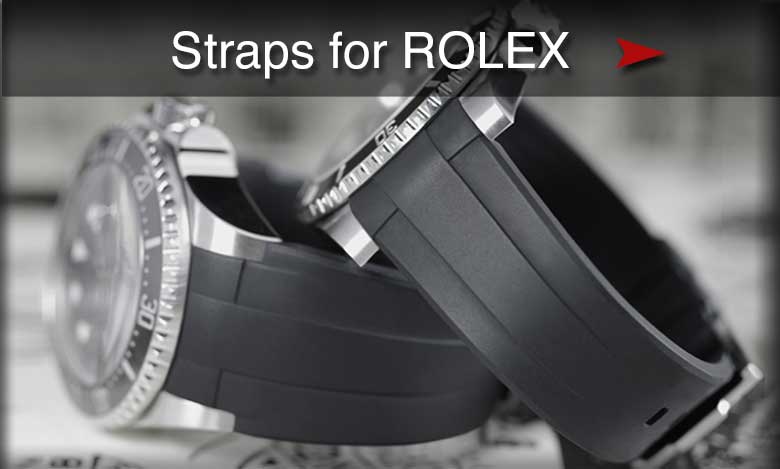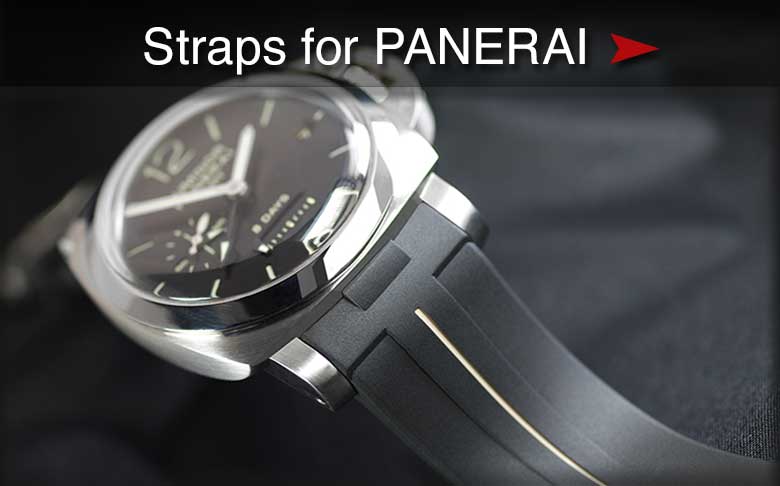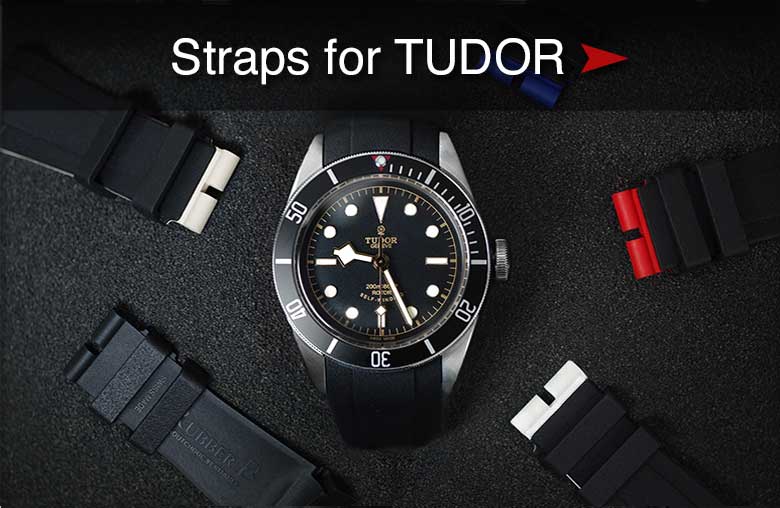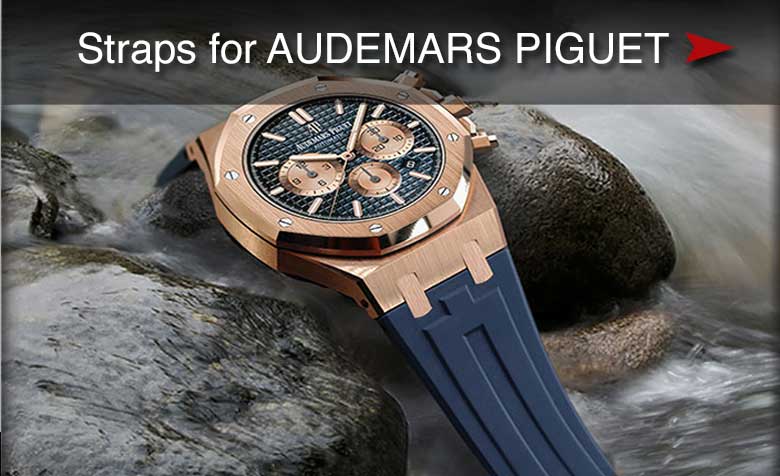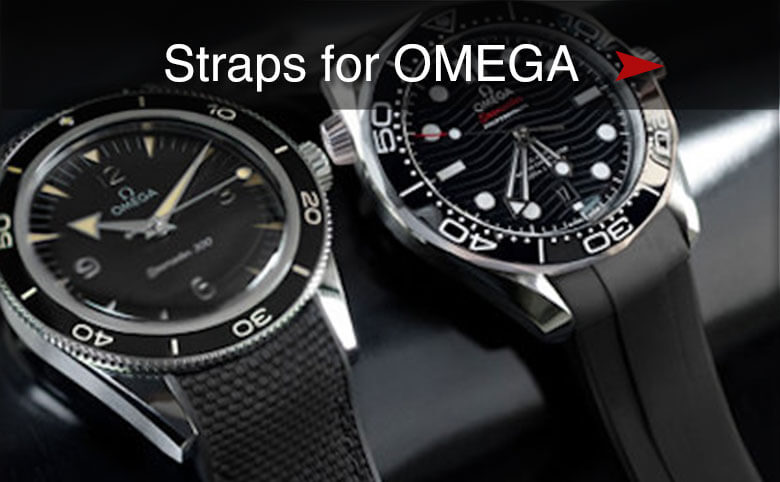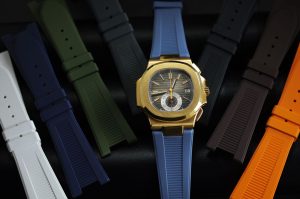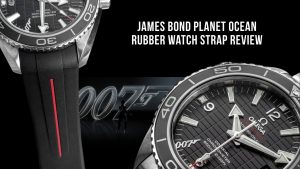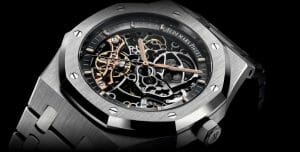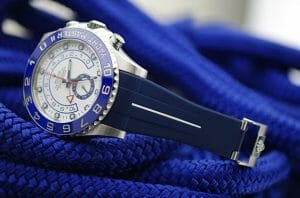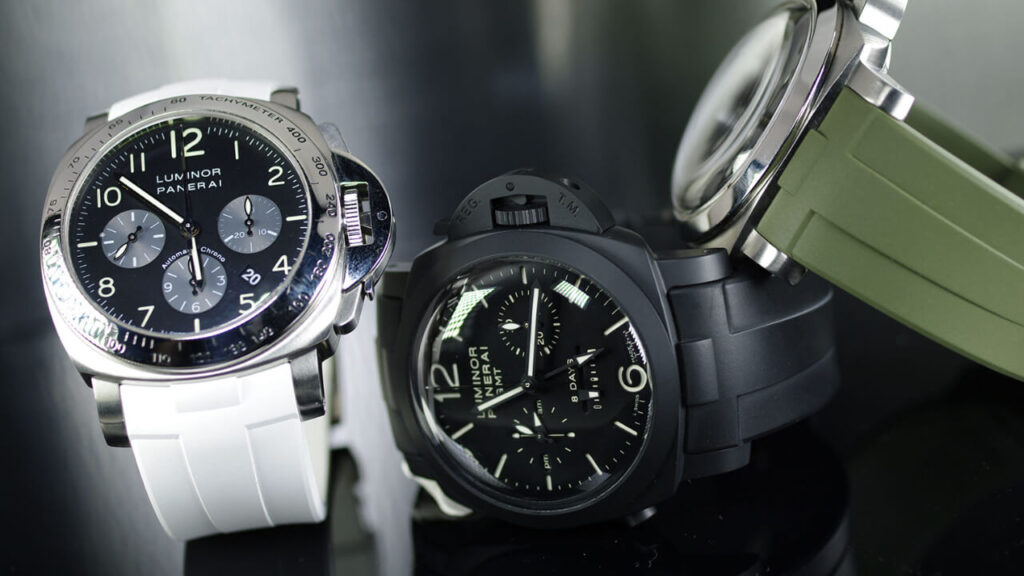
Panerai has a long history of making Panerai watches and tools for military use. Although their horological lineage is long, and their contributions to the use of crown protection and luminescence on its hour markers are significant, Panerai only recently became primarily a watch manufacturer. In fact, for most of the 1900’s Panerai really considered themselves a supplier of tools and devices for the Italian military’s use, rather than considering themselves primarily a watchmaker.
It wasn’t until roughly the 1990’s that Panerai decided to focus on the watchmaking market and devote itself to the craft that it has a long and distinguished history. Panerai didn’t become an overnight success. It took Sylvester Stallone to help bring Panerai into the public eye when he custom ordered his Slytech series of timepieces. Other actors like Arnold Schwarzenegger helped to solidify Panerai as a go-to Hollywood timepiece primarily for tough guy actors. The large powerful timepieces and connection to the toughest Italian army types added to its allure.
Yet, as Panerai went mainstream, the durable timepieces ended up on the wrists of many A-list actresses as well. At a fraction of the cost of a Rolex, the Panerai has ties to the illustrious brand name who has become a household name.
The original case design of Panerai timepieces actually contains the original shape of the original Rolex. Rolex actually shed its original shape for more of the rounded oyster shape. Panerai still retains the early “Oyster” shape with a rounded square shape that appeared on the very early Rolex timepieces of the 1920s to 1940s.
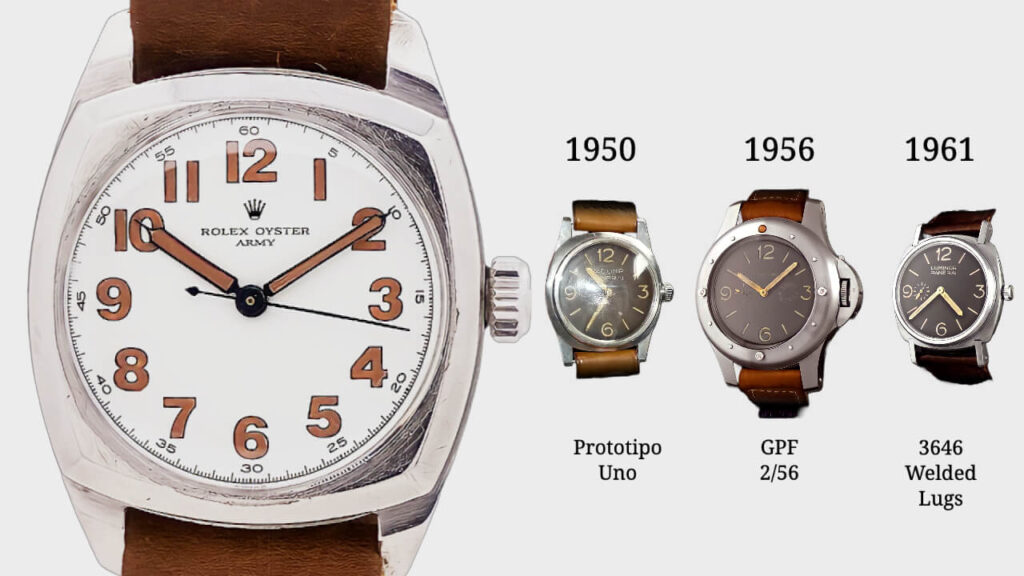
Panerai Watches Have a Long History Working With Rolex
The reason Panerai watches have the look of Rolex is that Rolex actually was contracted to make the Panerai cases for Panerai. This is one of the few instances that Rolex actually provided this type of service to another watchmaker. Certainly, these early Panerai watches made by Rolex are rare and in short supply. However, Panerai continued to make this identical timepiece in the Radiomir. As you can see the above “early Rolex Oyster” case with the big winding crown looks almost the same as the Radiomir below.
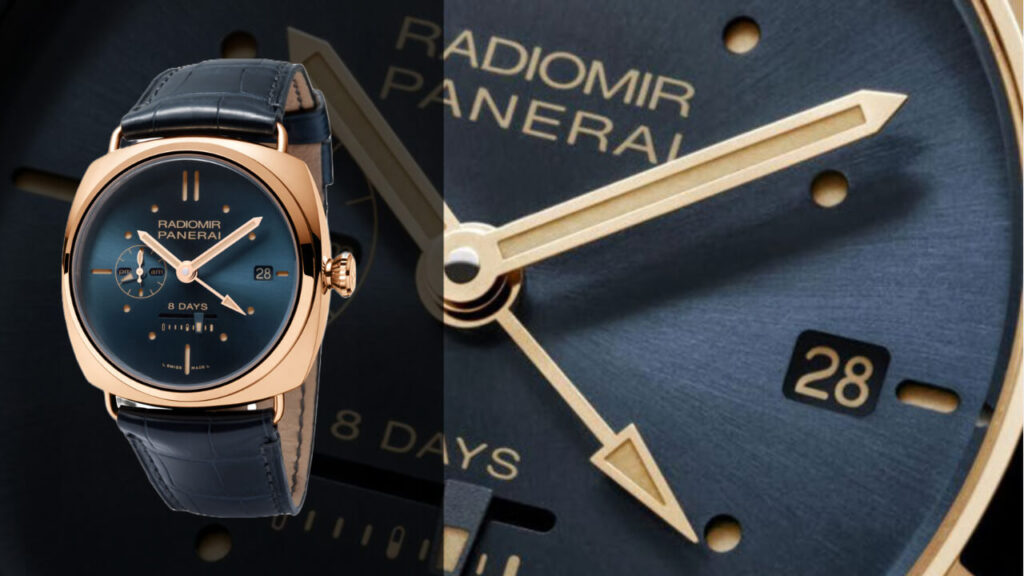
Panerai Radiomir looks nearly identical to the Original Rolex Oyster.
This case not only looks like Rolex, but it actually looks like the pocket watches produced in the 1800s and early 1900s. Early watches of the 1800s and early 1900s were never worn on the wrist. A personal timepiece was something that would fit into your pocket, often with a chain attached to it.
Early attempts to turn a pocket watch into a wristwatch really just were as simple as adding a loop to pass a strap through so that it could buckle around the wrist. World War 1 was a big reason watches started the transition into wristwatches. Both World War 1 and World War 2 helped to fund the advances in watch technology. The waterproof features, luminescence, durability, reliability, and even legibility were all enhancements made to assist soldiers on the field of battle.
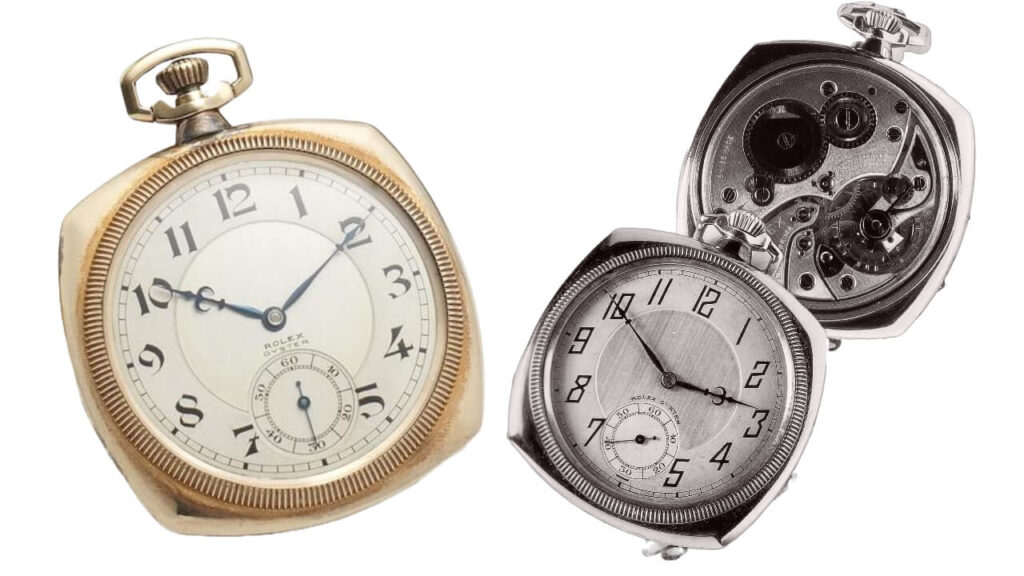
The original pocket watch design was used to make the first Rolex oyster wristwatch.
Although there are many other advancements that were made in the mid-1900s, the quartz crisis of the 1970s made a huge impact on the watchmaking industry. Low-cost watches entered the marketplace and flooded away the profitability of fine watchmakers, threatening their dominance and very existence.
However, fine watchmakers rebranded themselves as luxury pieces – jewelry for the rich and elite. Interestingly, pocket watch owners of the 1800s were considered wealthy when they brandished their pocket watches. So, the return to exclusivity for watch designers like Rolex, Panerai, and Audemars Piguet, was like history coming full circle.
Due to the hot market demand for timepieces today, watch manufacturers have tremendous creative freedom to create whatever watch designs they could ever want. Most designs are now created end to end in-house, and each manufacturer works hard to create new and increasingly more exquisite designs. They aren’t manufacturing for the military, but for rabid armies of collectors who use money as their weapon of choice.
The early days of watchmaking were much different. They borrowed cases, components, and more from various other watchmakers. Today, collectors want exclusivity. The intense competition between manufacturers has led them to exert greater control and secrecy. They have worked to bring everything in-house to have total control of the creative process.
Although collectors have rewarded new enhancements, they pay great homage to the past. Panerai takes this homage seriously by designing the Radiomir spectacularly close to the early design. The picture below shows how Rolex really didn’t change the design much other than to move the crown to the right side and add two loops for the watch band.
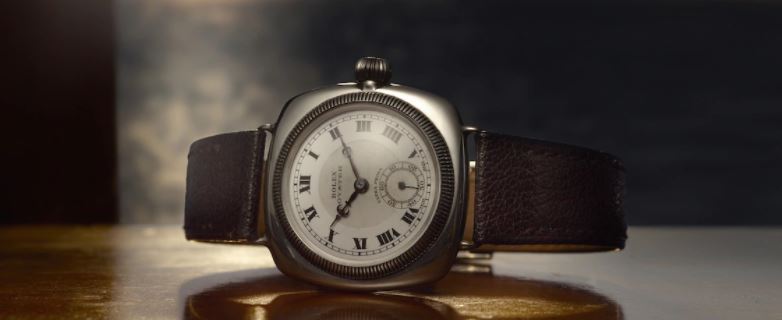
Panerai is well known for making military-grade watches, as well as other devices that would be used by the Italian navy. Contracted to make timepieces from the Italian Navy and also, for a short time, for the German Axis forces, Panerai wanted to add some strength to its timepiece. The weakest link to the Rolex and Radiomir case was the winding crown. As you can see in the pictures above, there were no “guards” added to the Radiomir or the Rolex timepieces shown. This changed when Panerai added the Locking Crown Guard to its new version – the Luminor.
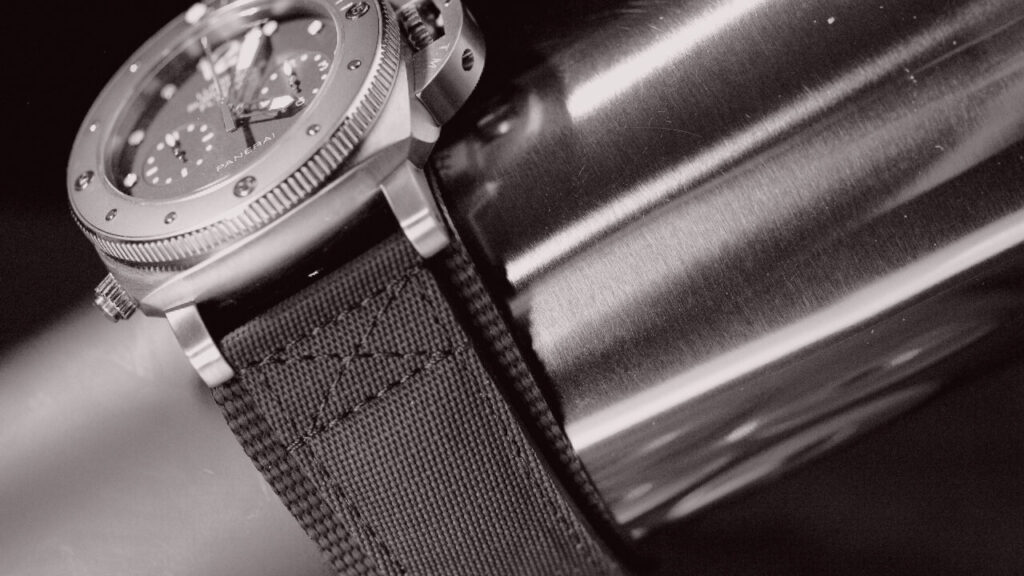
Here is an example of a Luminor with a protected crown locking mechanism and a combat strap from Rubber B.
The Luminor was a supremely excellent timepiece in its day. Not only did it have great waterproofness from the Rolex oyster case and the double waterproofness of the winding crown, but now the locking mechanism pushed the winding crown closer to the case, creating a better airtight seal. The locking mechanism also protected the most sensitive part of the watch – the winding crown – from accidental damage. The crown had always been a sensitive spot for those that attempted to wear watches while active. This feature made Panerai timepieces one of the most durable watches made at that time.
Panerai created the Luminor with both the luminescent paint on its hour markers and hands but also with this locking mechanism now Italian seals can be confident that their timepiece will survive in the harshest of environments. Today, people love the strength and durability of the Luminor timepiece.
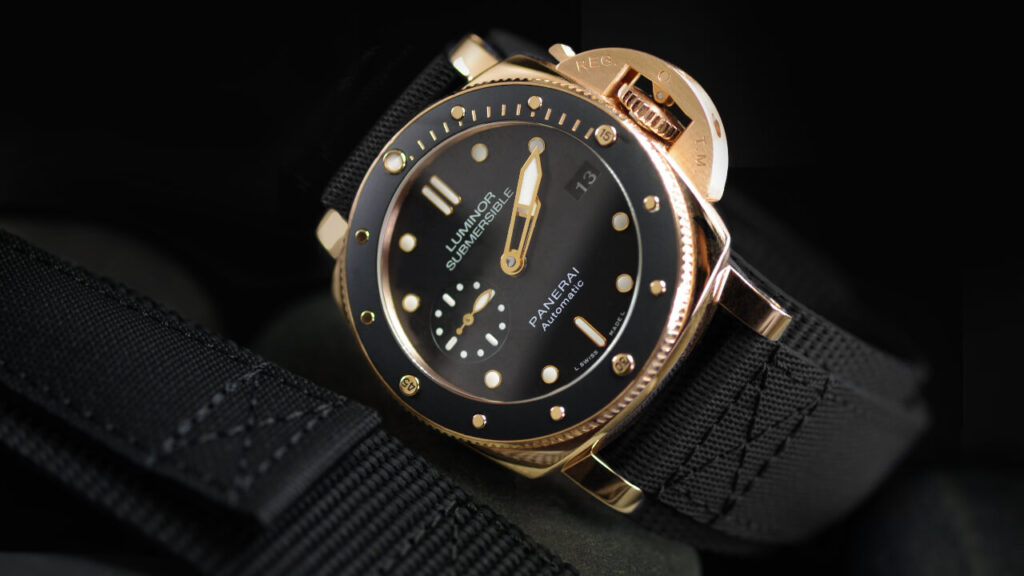
Here is the Panerai model timepiece with the rotating bezel – the Panerai Submersible.
Panerai has always made equipment for the military. The Panerai Luminor Submersible was really the Luminor, with the same locking mechanism, but now it has a rotating dial. This dial provides divers the ability to time their dives with perfection so that they can allow themselves to decompress and gauge the oxygen supply.
Panerai came out with a Luminor Due which is a more contemporary model which is thinner than other Luminor timepieces. However, it is very similar.
Unlike Rolex, Panerai doesn’t specifically label each and every timepiece with a number. However, each timepiece is assigned a number that begins with the letters PAM. One of the best ways to identify your Panerai is to look at the Panerai website and try and find out first if is it a Radiomir, Submersible, Luminor, or Luminor Due. Once you identify the one that fits that description, go to the collection and try and find the one that closely matches your timepiece. This may indicate the numerical value of your timepiece – for example, PAM00246.
Panerai has much more freedom to create different designs than Rolex. At least Rolex limits its changes to dial colors, gem assignment, and other subtle features, whereas Panerai makes different complications and may add a Rattrapante design one day and a moon phase or hand-wound timepiece the next. Panerai has also added a historical guide for some of its more unique designs here – This history is extremely helpful in identifying some of the more rare timepieces created by Officine Panerai.
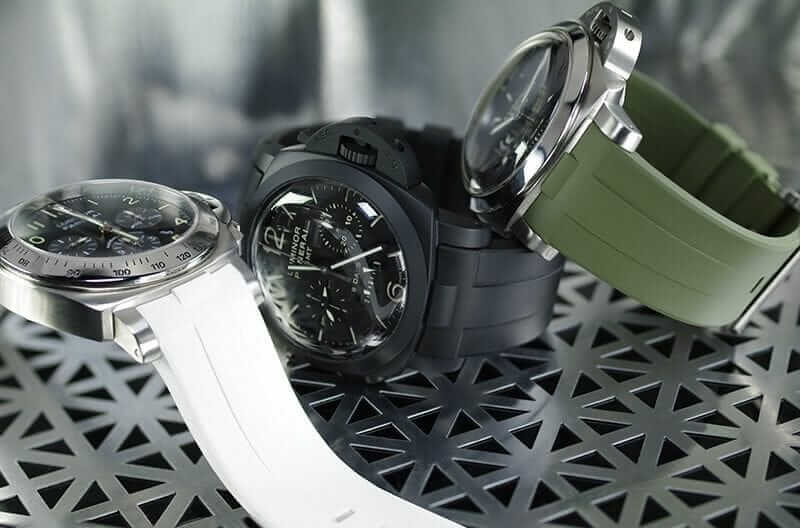
Panerai watches are exceptional timepieces and can be made more attractive with the various colors of Rubber B straps which are custom designed to fit the Panerai case.
Rubber B has created an impressive selection of watch band designs for the Panerai timepiece, which are made with strong, yet supple vulcanized rubber. Rubber B has many styles including NATO-style watch bands, bands that look like real Kevlar, but are 100% rubber, and bands that are more traditional and create a tight fit to the Panerai case. Once you find what Panerai Model you have, go to the Rubber B Panerai Page and design the perfect bracelet for your Panerai.
It may seem that only a few PANERAI watches exist when first familiarizing oneself with the iconic brand. However, there are in fact plenty of case options to choose from and even more variations in size for each one. Some descriptions are below:
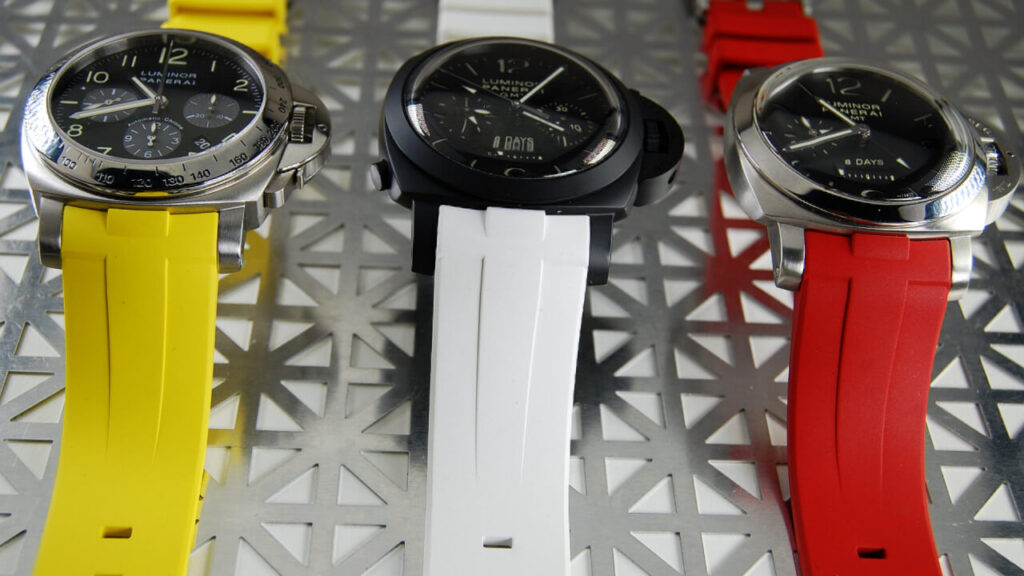
PANERAI LUMINOR
The most popular case style, in general, is the Panerai Luminor, which happens to be the most contemporary style of all of the Panerai watches. Its form is sleek with straighter edges, available in two sizes: 40mm and 44mm. The Panerai Luminor case carries the brand’s most recognizable feature, the “device protecting the crown” which has been aptly trademarked by Officine Panerai.
PANERAI LUMINOR 1950:
The Luminor 1950 case can be considered similar to the standard Luminor from the front view, however, the side and back views reveal a very different Panerai case. Most noticeable is its uniquely domed crystal, which resembles the glass used in vintage times past. Some versions of the Luminor 1950 feature a less defined dome, with a lower rounded effect, more resembling the standard Luminor. The 1950 case maintains its vintage appeal with a modern flare while carrying the device protecting the crown which we can so easily associate with Panerai. It comes equipped well beyond other Panerai watch base models and comes in 44mm and 47mm.
PANERAI RADIOMIR
Glorious in rich history, the Radiomir offers the most choices of case sizes: 42mm, 43mm, 45mm, 46mm, and 47mm, several sizes being special editions. The Radiomir can be considered the most vintage-looking of Panerai watches. It has a simple crown, with no protective device. Its case is minimalistic and square with softly curved edges. Giving it an even more subdued style, are wire lugs that attach the draped leather strap to its case.
LUMINOR SUBMERSIBLE
Probably considered the “coolest” Panerai today, the Submersible has a virtual mix of all things Panerai… Obvious at first is the device protecting the crown, the “round and square at the same time” oversized case which comes in 44mm or 47mm, and the rugged rubber strap. This watch is water resistant to 300 meters and comes in an array of materials such as stainless steel, titanium, ceramic, and Bronzo.
MARE NOSTRUM
In the 1990s, the Panerai brand was coming back to the surface after many years of dormancy. They released two models: the Luminor and the very different-looking Mare Nostrum. Produced from 1993-1997, the Mare Nostrum was developed in tribute to an officer’s deck watch that Panerai had designed years earlier, but never produced. Once released, it was not popular or considered greatly in the mainstream market. Ironically, it has a case shape and mechanical esthetics that vaguely resembles most other Panerai watches.
FERRARI
The Ferrari case is uniquely its own, and a bit less popular, although very much appreciated by a more modern-minded audience. The smooth Panerai case includes a very large, rugged textured crown and comes in two sizes: 40mm and 45mm.
